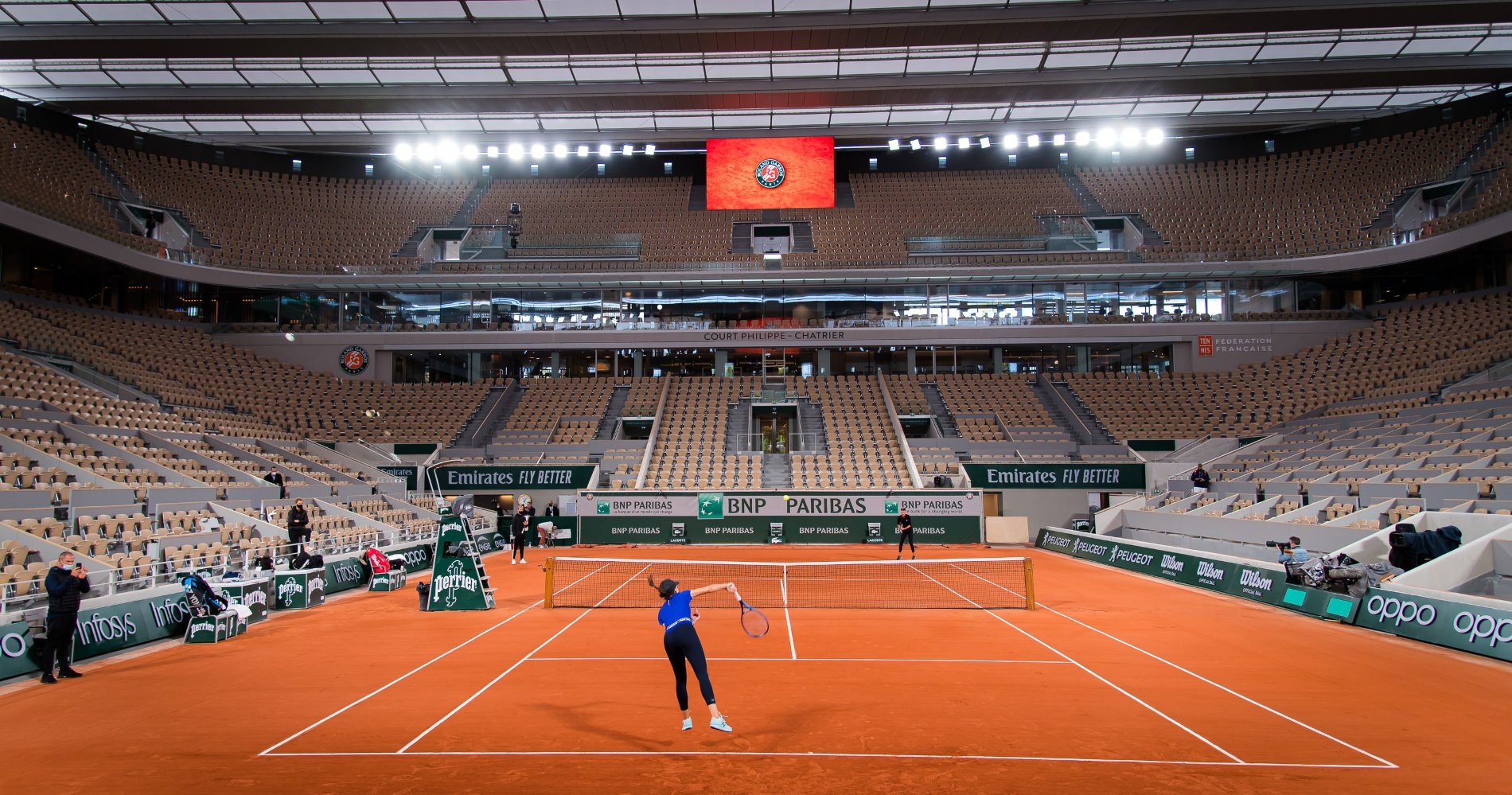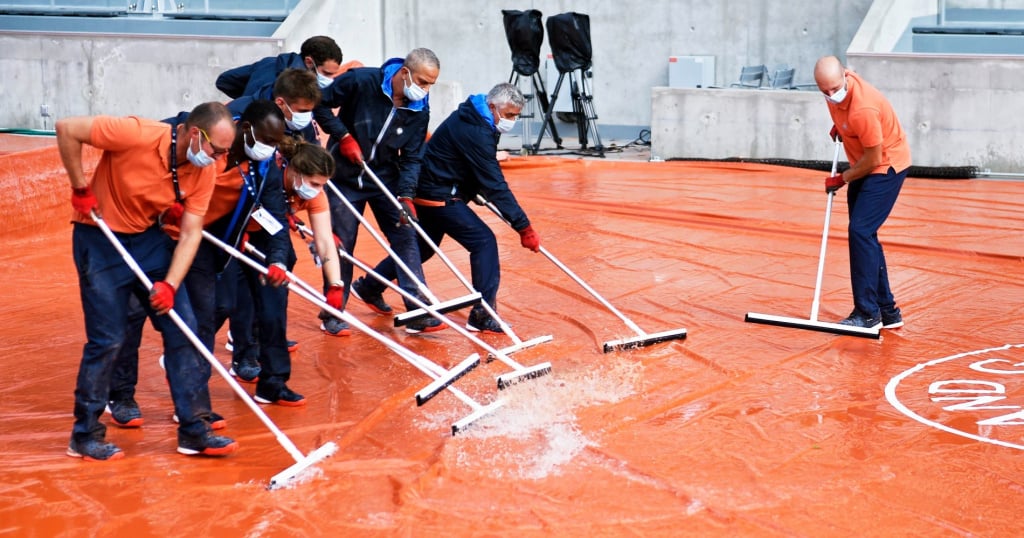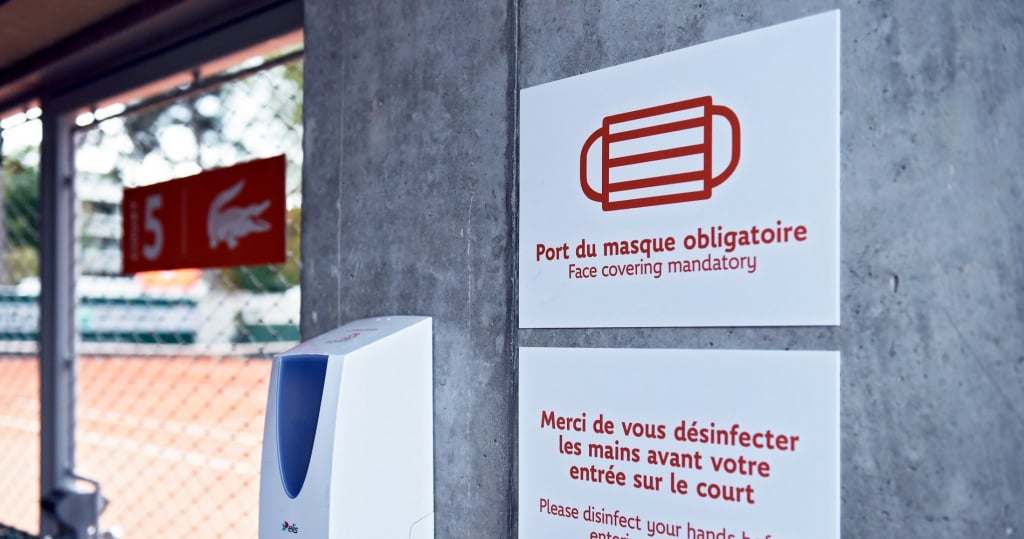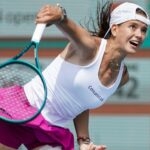Covid-19, rain, cold, heavy balls: A Roland-Garros like no other
Moved from May-June to September-October because of the pandemic and with Covid-19, rain, cold and heavy balls to deal with, this year’s Roland-Garros, which begins on Sunday, is like no other.
 Ambiance in Court Philippe Chatrier during practice before the start of the 2020 Roland Garros Grand Slam tennis tournament
Ambiance in Court Philippe Chatrier during practice before the start of the 2020 Roland Garros Grand Slam tennis tournament
Even with only 1,000 fans allowed in per day and a combination of factors making life difficult for players, everyone is happy that Roland-Garros is happening at all.
But it’s an inescapable fact that there are a number of things that are going to be different this year. Tennis Majors explains what they are and how they might affect the destination of the titles this year.
Initially planned for its usual slot, this year from May 25 to June 7, Roland-Garros was first moved to September 20 to October 4 and then finally to September 27-October 11. The main consequence? The days will be shorter and the sun begins to set from 5pm, with lights required probably from around 5.30pm.
Le tournoi de #RolandGarros confirme ses dates et se déroulera sur trois semaines, du 21 septembre au 11 octobre 2020.
Plus d’infos : https://t.co/kQKK8rASvg— Roland-Garros (@rolandgarros) June 17, 2020

Wrap up warm
During the fortnight, it’s going to be cold. Don’t be surprised to see the men and women players in long-sleeved outfits and even leggings. In the mornings, temperatures will be between 8 and 13 degrees, and though it might hit 20 in the afternoon, if we’re lucky, players, including Rafael Nadal, expressed their feelings about the fresh conditions they are experiencing in Paris.
« It’s very cold, which makes it difficult for everyone. It’s a bit extreme conditions to play in. The conditions are probably the most difficult I’ve ever experienced at Roland Garros for different reasons. ». »
Floodlit courts but not dedicated night sessions (that comes next year)
This is a first: 12 of the 14 courts in use this year have floodlights, which means more matches can be finished than would otherwise be the case. The sun will definitely set by about 7.30pm and the light will be fading in the hour before then, so the lights will help a lot. They will actually be lit from 5:30 pm but strictly speaking, there will be no night sessions (they are scheduled to happen in 2021, with an 8pm start). But this will add a new dimension for those who are scheduled to play the last match on each court.
A roof to protect Court Philippe Chatrier
This is THE great thing that we’ve been looking forward to for many years; Court Philippe Chatrier is finally equipped with a roof. On February 5, the work that began three years ago was completed with the installation of the last wing, the 11th, in homage to the aviator, Roland Garros.
“In May 2017, we took up the challenge of rebuilding the Philippe-Chatrier court in three years with a retractable roof,” said Bernard Giudicelli, President of the French Tennis Federation (FFT). “This magnificent tool illustrates our audacity and our constant desire to build and innovate.
📹 Frissons… En immersion sur le nouveau court Philippe-Chatrier de #RolandGarros
Il vous plaît ? pic.twitter.com/RBtnwf1L6T
— FFT (@FFTennis) September 24, 2020
New sponsor, new balls
There’s a new sponsor for Roland-Garros this year. After nine years with Babolat, the balls will be provided by Wilson, who have the contract until 2025. And it seems the balls the players are going to be using this year are not to everyone’s taste. Rafael Nadal – who uses Babolat racquets – made that much clear on media day on Friday.
“I think it is not a good ball to play on clay, honestly,” he said. “That is my personal opinion. Is not the right ball to play on clay court. Even with these conditions makes the things tougher, no? But I knew before arrived here. No problem at all. Just accept the challenge. I really believe that the organisation need to take a look on that for the next couple of years, for the health of the players, too, because the ball super heavy becomes dangerous for the elbow and for the shoulders, I think. »
Novak Djokovic was more measured in his assessment.






